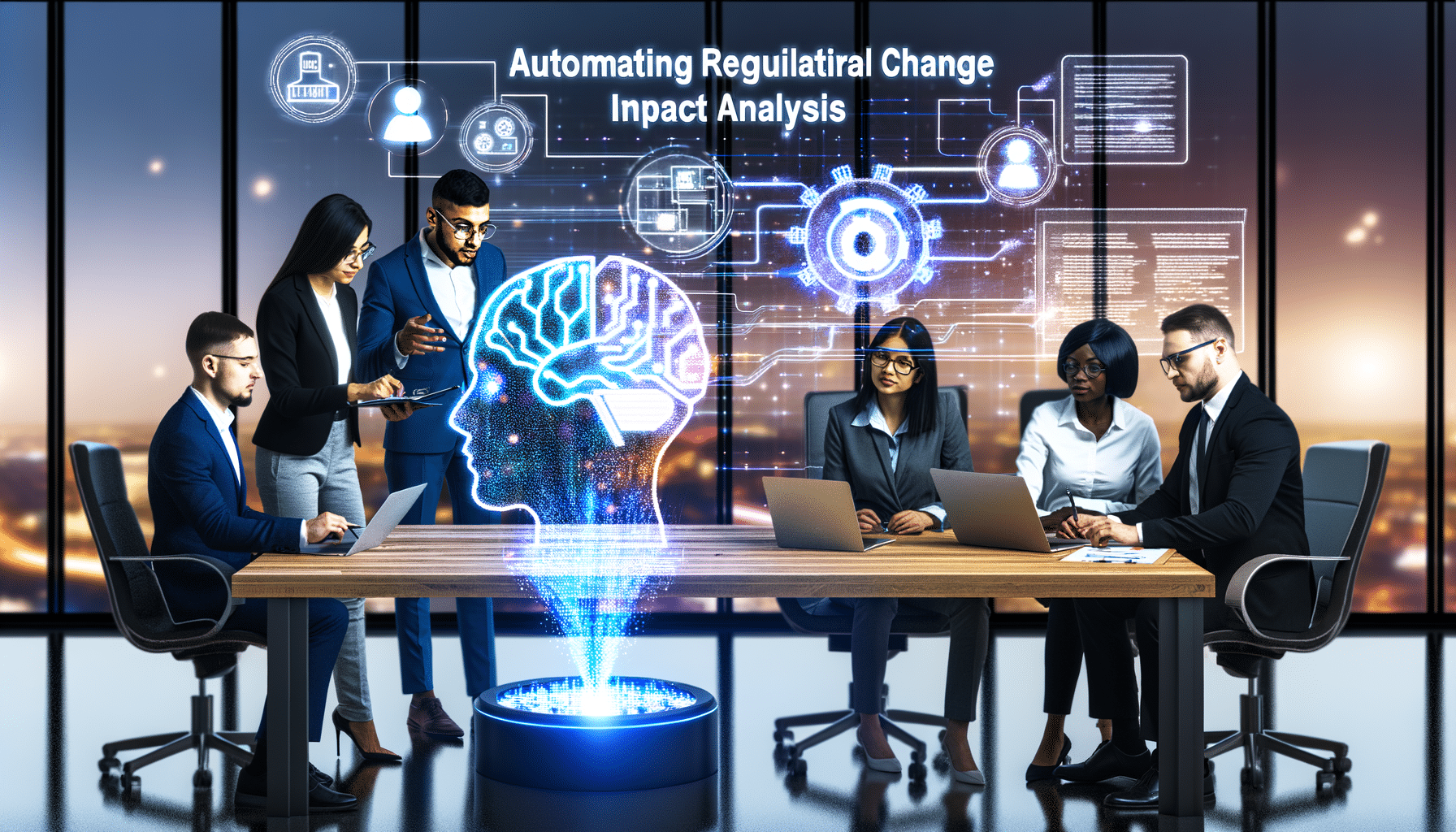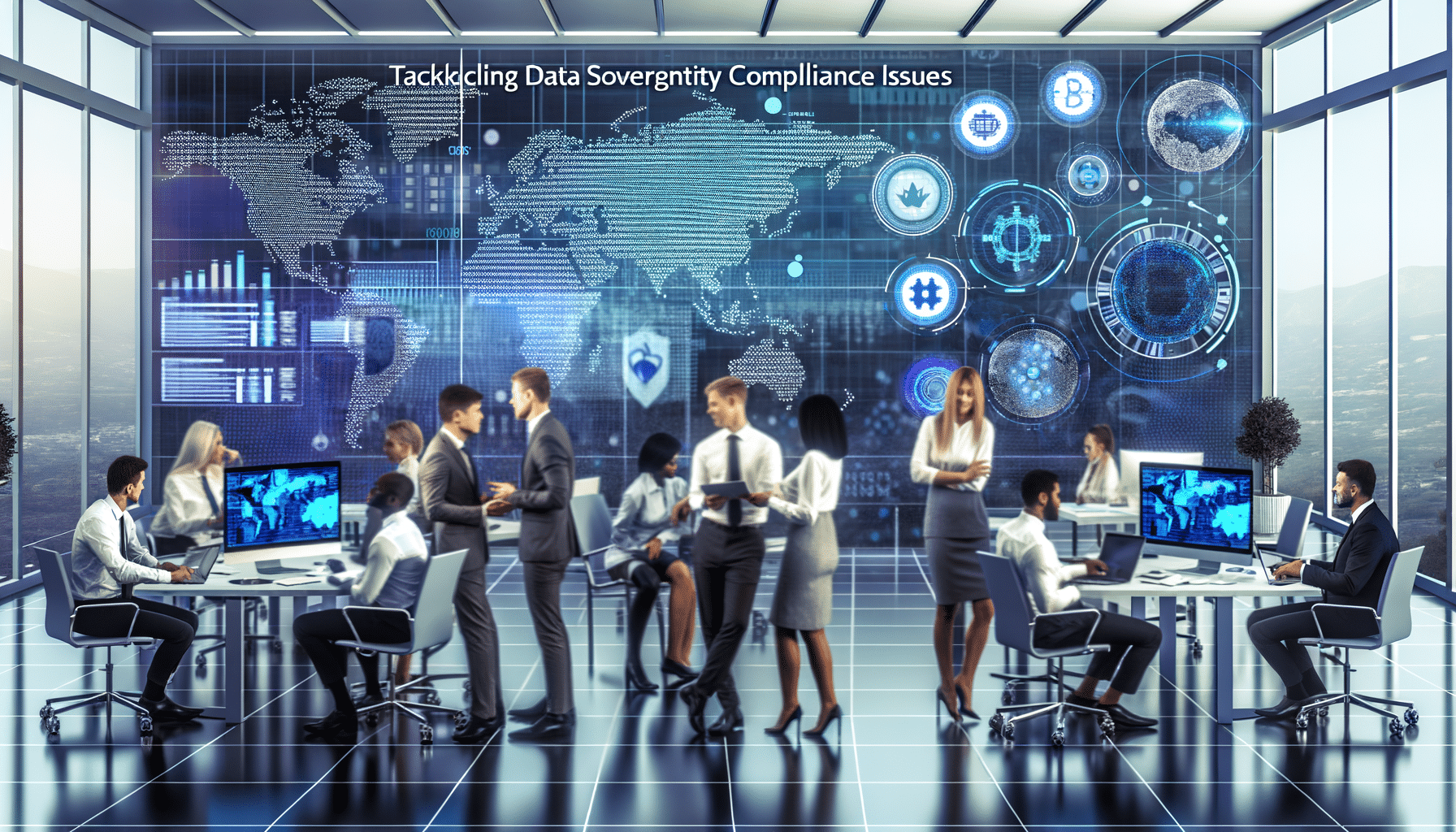- Regulatory
- November 16, 2024
Automating Regulatory Change Impact Analysis

Transforming Regulatory Compliance: Embrace the Future with AI-Driven Change Impact Analysis
As someone who has navigated the complexities of entrepreneurship and technology, I’ve witnessed firsthand the mountain of challenges that come with regulatory compliance. The rapidly changing landscape of regulations can be overwhelming for businesses striving to maintain compliance. The good news is that we no longer need to rely on manual processes, thanks to innovative technology like AI. In this article, I’ll dive into how AI-powered analysis fundamentally transforms the way we handle regulatory change impacts on records and compliance.
The Challenges of Regulatory Change
For legal, finance, and compliance professionals, managing regulatory change is often a daunting task. Regulations don’t just change; they evolve with time, imposing intricate and nuanced requirements that demand careful attention. Often, these changes impact your existing records and compliance protocols, making it critical to reassess and realign your operations to stay compliant.
The Role of AI in Regulatory Compliance
Enter the era of artificial intelligence. AI can analyse massive datasets quickly and accurately, a feat that is near impossible for humans to perform effectively with the same speed and precision. At RecordsKeeper.AI, we leverage AI to automate the analysis of regulatory change impacts on records and compliance processes. This automation helps organizations streamline their compliance efforts and save precious time and resources.
Benefits of AI-Driven Analysis
- Precision: AI tools can swiftly identify the regulations relevant to your industry, ensuring compliance with pinpoint accuracy.
- Efficiency: Automating the analysis of regulatory changes means less time spent on manual updates and more focus on core business activities.
- Consistency: AI algorithms offer consistent evaluations, reducing the risk of human error in assessing the impact of regulatory changes.
Streamlining Compliance Processes with Automation
One of the profound impacts of AI in regulatory compliance is the ability to streamline processes. By automating routine tasks, such as categorizing and tagging records for compliance purposes, organizations can significantly reduce the burden on human resources. This efficiency allows teams to focus on strategic initiatives rather than getting bogged down by operational tasks.
In addition, technologies like blockchain integration in RecordsKeeper.AI ensure the integrity and immutability of records. When regulatory changes occur, you have a solid foundation to verify and audit records without the fear of tampering or loss.
Ensuring Compliance with Dynamic Workflows
Regulatory changes don’t just impact existing records; they may necessitate workflow changes throughout the organization. With the help of AI, these workflows can be dynamically adjusted to meet new regulatory requirements without delay. By doing so, RecordsKeeper.AI empowers legal, finance, and compliance heads to ensure seamless continuity in operations.
Our policy management tools are particularly advantageous in such scenarios. Organizations can automatically enforce data retention and deletion policies, adapting to regulatory changes as they occur. Compliance management becomes more proactive, moving beyond reactive measures to anticipatory actions.
Looking Forward: The Future of AI in Regulatory Compliance
The potential for AI in regulatory compliance is vast and continues to grow. As the regulatory landscape expands, AI will become an indispensable ally for businesses eager to maintain compliance without overextending their resources. By embracing AI-driven regulatory change impact analysis, we are not just managing compliance; we are strategically positioning ourselves for future challenges.
At RecordsKeeper.AI, we are committed to helping organizations harness the power of technology to transform regulatory compliance. The journey of entrepreneurship has taught me the importance of innovation and resilience. Through AI, we are creating solutions that are not only functional but are geared towards making a real impact in the lives of those in-charge of keeping records.
If the complexities of regulatory compliance are leaving you overwhelmed, I invite you to explore the capabilities of RecordsKeeper.AI. Dive into this seamless approach to compliance, and transform how you manage regulatory changes with AI-powered insights.
For more on how AI and technology can revolutionize your business practices, stay connected for further insights from my entrepreneurial journey and our ongoing advancements at RecordsKeeper.AI.
Toshendra Sharma is the visionary founder and CEO of RecordsKeeper.AI, spearheading the fusion of AI and blockchain to redefine enterprise record management. With a groundbreaking approach to solving complex business challenges, Toshendra combines deep expertise in blockchain and artificial intelligence with an acute understanding of enterprise compliance and security needs.
Related Posts

Managing Complex Regulatory Documentation Requirements
Simplifying complex regulatory documentation with AI automation.
- November 16, 2024

Tackling Data Sovereignty Compliance Issues
Managing data sovereignty requirements with AI and blockchain.
- November 16, 2024
Archives
- January 2025
- December 2024
- November 2024
- October 2024
- September 2024
- August 2024
- July 2024
- June 2024
- May 2024
- April 2024
- March 2024
- February 2024
- January 2024
- December 2023
- November 2023
- October 2023
- September 2023
- August 2023
- July 2023
- June 2023
- May 2023
- April 2023
- March 2023
- February 2023
- January 2023
- December 2022
- November 2022
- October 2022
- September 2022
Want to get more content like this?
Signup to directly get this type of content to your inbox!!
Latest Post
Document Control for Equipment Maintenance
- January 20, 2025
Managing Records for Multiple Clients
- January 19, 2025
Handling Conference Documentation
- January 18, 2025
Setting Up Department Record Reviews
- January 17, 2025





